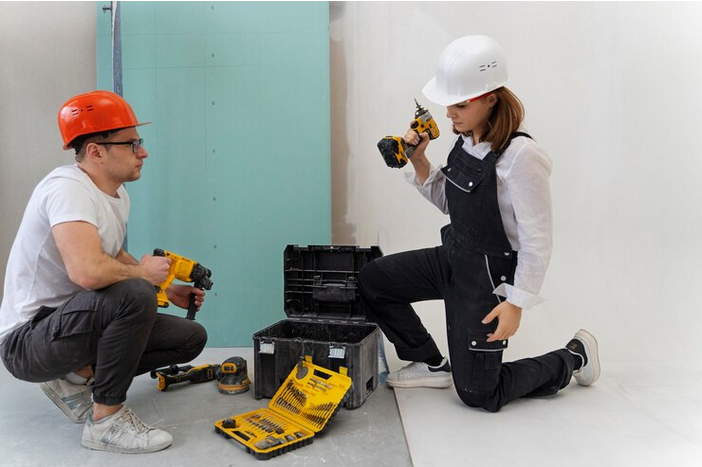Building maintenance is a crucial aspect of property management that ensures the longevity and efficiency of a facility. It encompasses a range of services aimed at keeping a building in optimal condition, enhancing its value, and providing a safe environment for occupants. This article delves into the various types of building maintenance services, their importance, and the long-term benefits they offer.
Understanding Building Maintenance
Building maintenance refers to the systematic process of preserving and enhancing a building's structural integrity, functionality, and aesthetics. It involves regular inspections, repairs, and updates to ensure that the facility meets safety standards and operational efficiency. Effective maintenance strategies can lead to significant cost savings, improved occupant satisfaction, and increased property value.
Types of Building Maintenance Services
Building maintenance services can be broadly categorized into several types, each addressing specific needs and aspects of a facility.
1. Preventive Maintenance
Preventive maintenance involves proactive measures to prevent equipment and systems from failing. This includes regular inspections, servicing, and repairs before issues arise. Common preventive maintenance tasks include:
- HVAC System Checks: Regular servicing of heating, ventilation, and air conditioning systems to ensure they operate efficiently.
- Electrical System Inspections: Routine checks of wiring, circuit breakers, and outlets to prevent electrical failures.
- Plumbing Maintenance: Inspection of pipes, drains, and fixtures to prevent leaks and clogs.
Preventive maintenance helps in identifying potential problems early, reducing the likelihood of costly repairs and downtime.
2. Corrective Maintenance
Corrective maintenance occurs after a problem has been identified. It involves repairing or replacing faulty components to restore a building's functionality. This type of service is essential for:
- Addressing Emergencies: Quick response to urgent issues, such as plumbing leaks or electrical failures.
- Routine Repairs: Fixing worn-out parts or systems that have degraded over time.
While corrective maintenance is necessary, relying solely on this approach can lead to higher costs and more significant disruptions.
3. Predictive Maintenance
Predictive maintenance utilizes advanced technologies to anticipate equipment failures before they occur. This approach employs data analysis and monitoring tools to track the performance of building systems. Key aspects include:
- Condition Monitoring: Using sensors to monitor equipment health and performance metrics.
- Data Analysis: Analyzing historical data to predict potential failures and scheduling maintenance accordingly.
By implementing predictive maintenance, building managers can optimize maintenance schedules and reduce unexpected downtime.
4. Routine Maintenance
Routine maintenance refers to the regular upkeep activities needed to maintain the functionality and appearance of a building. This includes:
- Cleaning Services: Regular cleaning of common areas, offices, and restrooms to maintain hygiene and aesthetics.
- Landscaping: Maintaining outdoor spaces to enhance the building's curb appeal.
- Pest Control: Regular inspections and treatments to prevent infestations.
Routine maintenance is essential for creating a welcoming environment for occupants and enhancing the overall image of the building.
5. Emergency Maintenance
Emergency maintenance services are crucial for addressing unforeseen issues that require immediate attention. This can involve:
- Rapid Response Teams: Skilled technicians available 24/7 to handle emergencies such as flooding, power outages, or fire damage.
- Temporary Repairs: Implementing quick fixes to prevent further damage while planning for comprehensive repairs.
Having a reliable emergency maintenance plan in place can minimize damage and restore normalcy quickly.
Benefits of Comprehensive Building Maintenance Services
Investing in comprehensive building maintenance services offers numerous advantages that contribute to long-term reliability.
1. Cost Savings
Regular maintenance helps in identifying and addressing minor issues before they escalate into major problems, which can be costly to repair. By investing in preventive and predictive maintenance, building owners can significantly reduce long-term expenditures.
2. Enhanced Safety
A well-maintained building is safer for occupants. Regular inspections and timely repairs of critical systems—such as electrical, plumbing, and HVAC—ensure compliance with safety standards and reduce the risk of accidents.
3. Increased Property Value
Maintaining a building in good condition directly impacts its market value. Prospective buyers or tenants are more likely to invest in a property that is well-maintained, creating a positive impression and boosting resale value.
4. Improved Occupant Satisfaction
A clean, safe, and well-functioning building enhances the experience of its occupants. Providing a comfortable environment can lead to higher tenant retention rates and attract new tenants.
5. Sustainability
Implementing maintenance strategies that focus on energy efficiency and sustainability can contribute to reducing the environmental impact of a building. This can involve upgrading systems to more energy-efficient models and ensuring proper waste management practices.
Best Practices for Effective Building Maintenance
To ensure the effectiveness of building maintenance services, property managers should consider the following best practices:
1. Develop a Comprehensive Maintenance Plan
A well-structured maintenance plan should outline all necessary services, schedules, and responsibilities. This plan should be tailored to the specific needs of the building and its occupants.
2. Utilize Technology
Leveraging technology can enhance maintenance operations. Building management software can streamline scheduling, track maintenance history, and facilitate communication between property managers and maintenance teams.
3. Regular Training for Maintenance Staff
Investing in ongoing training for maintenance personnel ensures they are equipped with the latest skills and knowledge. This leads to more efficient and effective maintenance practices.
4. Conduct Regular Inspections
Routine inspections can help identify potential issues before they become significant problems. Establishing a schedule for regular check-ups can keep systems in optimal condition.
5. Engage with Occupants
Encouraging feedback from occupants can provide valuable insights into maintenance needs. Residents and tenants often notice issues that may go unnoticed by maintenance staff.
Conclusion
Comprehensive building maintenance services play a vital role in ensuring the long-term reliability of a facility. By investing in preventive, corrective, predictive, routine, and emergency maintenance, property owners can enhance safety, reduce costs, and improve occupant satisfaction. The implementation of best practices, coupled with the use of technology, can further optimize maintenance operations. Ultimately, a commitment to thorough and proactive maintenance will lead to a more sustainable and valuable property for years to come.





Comments